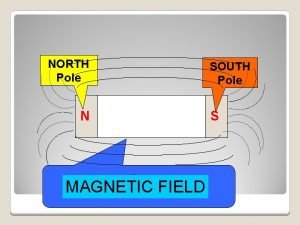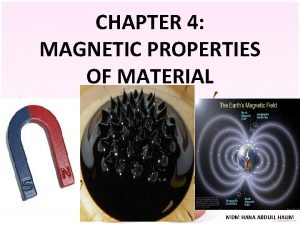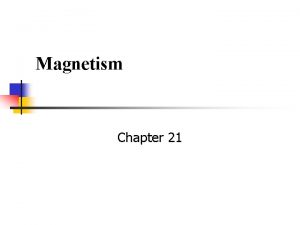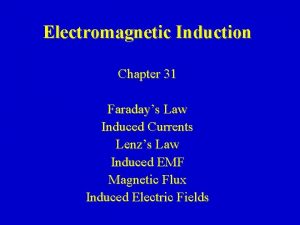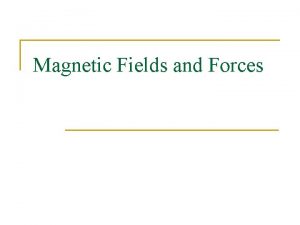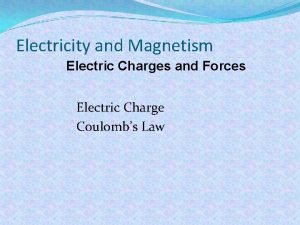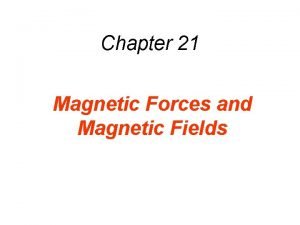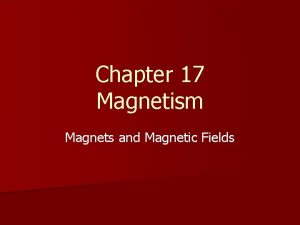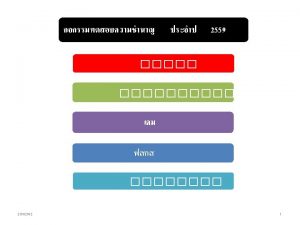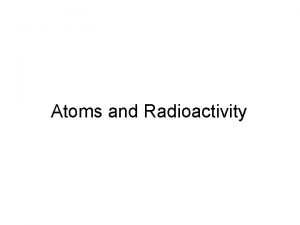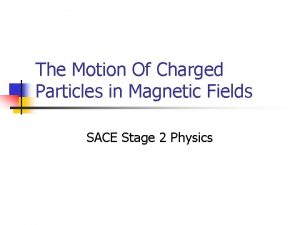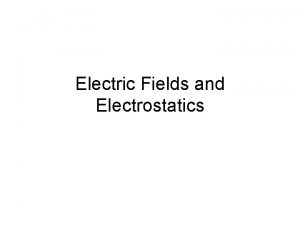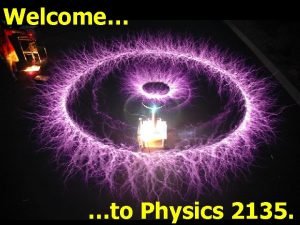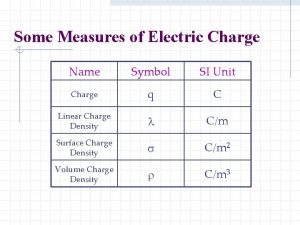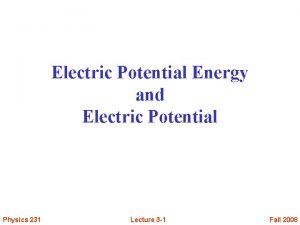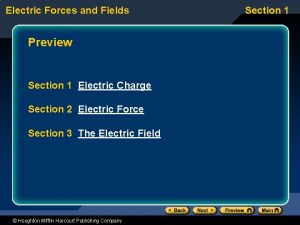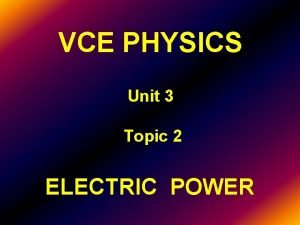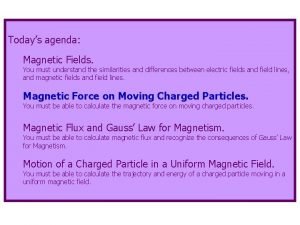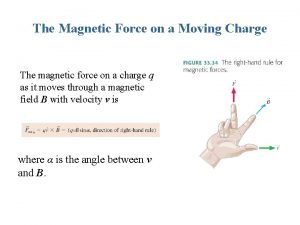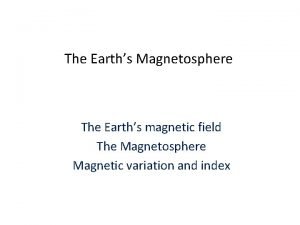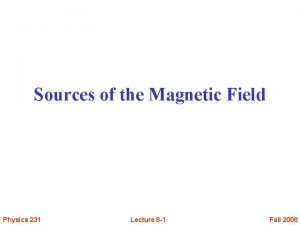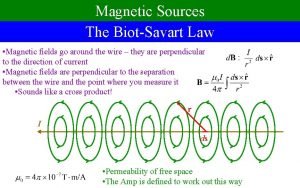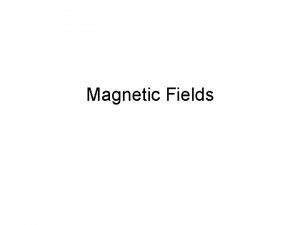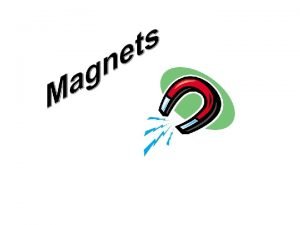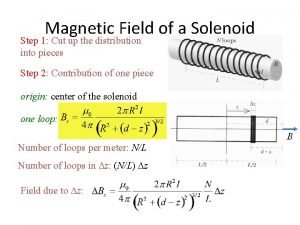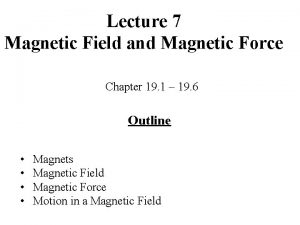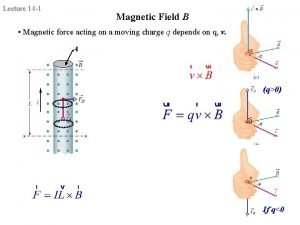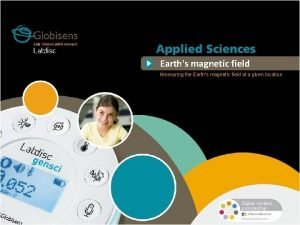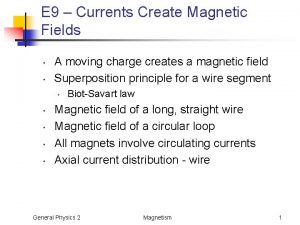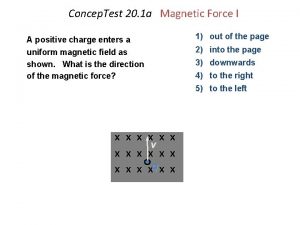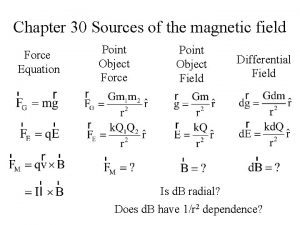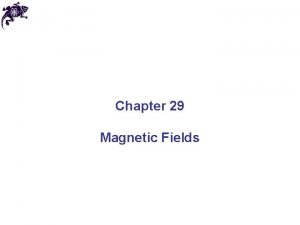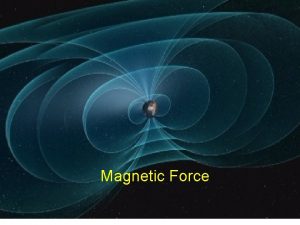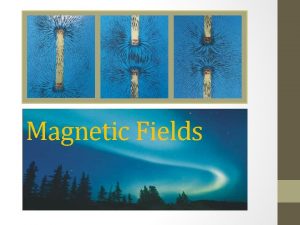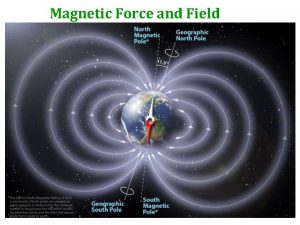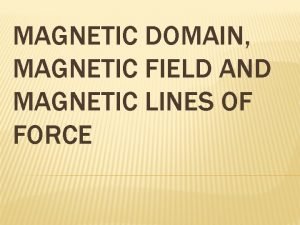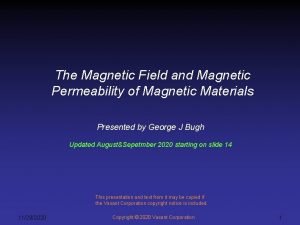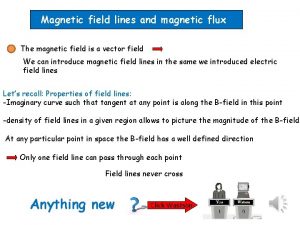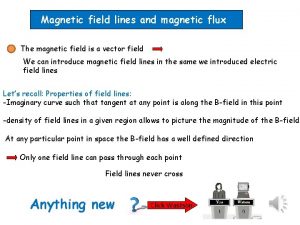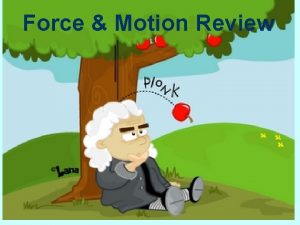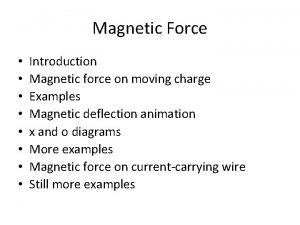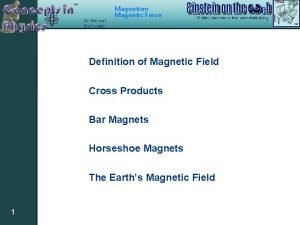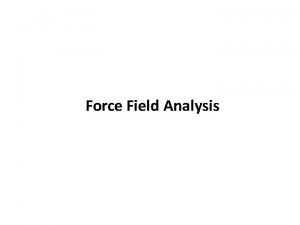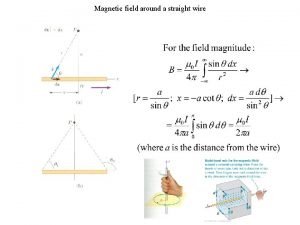MAGNETIC METHOD Magnetic force and field strength for


























































- Slides: 58

MAGNETIC METHOD Magnetic force and field strength for pole strength m’ and m

MAGNETIC METHOD Magnetic poles only exist in pairs magnetic moment M C = magnitude of couple

MAGNETIC METHOD Intensity of magnetization J k is the magnetic susceptibility which describes the degree to which a body is magnetized when put in an external field H. k is the fundamental parameter in magnetic prospecting.

MAGNETIC METHOD • Diamagnetic minerals have low negative susceptibilities (quartz, feldspar) • Paramagnetic minerals have low positive susceptibilities (olivine, pyroxene) • Ferromagnetic material have strong susceptibilities (iron, nickel, cobalt) • Antiferromagnetic mineral have a net (almost) zero magnetic moment (hematite) • Ferrimagnetic minerals have a net magnetic moment (magnetite, illmenite)

MAGNETIC METHOD

MAGNETIC METHOD

MAGNETIC METHOD If a magnetic material is placed in an external field H, its internal poles line up to produce a field on their own H’ producing a total field B

EARTH’S MAGNETIC FIELD • Main field (core: mostly dipolar) • Small external field, changes rapidly with time • Variations of the main field due to local magnetic anomalies (targets)

EARTH’S MAGNETIC FIELD

EARTH’S MAGNETIC FIELD

DIPOLE EQUATIONS

MEASURING THE MAGNETIC FIELD Flux-gate magnetometer measures all components of the magnetic field. Approximately 1 n. T precision

MEASURING THE MAGNETIC FIELD Proton-precession magnetometer only measures the intensity of the magnetic field. Approximately 1 n. T precision

TOTAL FIELD ANOMALIES

TOTAL FIELD ANOMALIES We measure FET which is FAT plus FEU The Earth’s field is much stronger than that of the anomaly if low susceptibility We define a body and calculate HA and ZA

FIELD PROCEDURES Magnetic cleanliness (watches, pens, cars, power lines…. ) Short-term variations in the external field of a few n. T • Returning to base • Continuous recording at base • Storms!

FIELD PROCEDURES Elevation correction Approximately 0. 03 n. T/m , normally neglected because lost in noise Horizontal correction Approximately 6 n. T/km

FIELD PROCEDURES

INTERPRETATION MORE DIFFICULT THAN FOR GRAVITY Positive and negative poles Horizontal and vertical component

MAGNETIC EFFECT OF SIMPLE SHAPES: MONOPOLE

MAGNETIC EFFECT OF SIMPLE SHAPES: MONOPOLE

MAGNETIC EFFECT OF SIMPLE SHAPES: DIPOLE




MAGNETIC EFFECT OF SIMPLE SHAPES: SPHERE Poisson’s relation, where U gravitational potential, w direction of magnetization

MAGNETIC EFFECT OF SIMPLE SHAPES: SPHERE











INTERPRETATION OF MAGNETIC DATA Difficulties • No unique solution additional information • Remnant magnetization • Large variability and non-uniform distribution of susceptibility • Total-field measurements only • Dependence of anomaly on direction of magnetization

INTERPRETATION OF MAGNETIC DATA Advantages • Low cost - high precision • Orientation of Earth’s field is constant for given survey compare to appropriate characteristic curves • Large anomalies due to few rock types with high susceptibility • Poisson’s relation can turn magnetic into pseudo gravity data • Similar techniques to gravity

HALF-MAXIMUM TECHNIQUE Less precise than with gravity even if we know the shape. Example: thin vertical rod (monopole) Sphere and cylinder: width at ZA 2 = z Semi-infinite sheet: (xmax-xmin)/2 = z



SLOPE METHODS Peters: z=d/1. 6 (prism depth ~ width << length, strike infinite // meridian)

APPLICATIONS • Archaeology: often iron objects (high susceptibility) associated with ancient sites, high remnant magnetism in production of bricks etc. • Voids and well castings, steal objects, bombs • Landfill geometry • Geology














 Force on charged particle
Force on charged particle Magnetic moment and magnetic field relation
Magnetic moment and magnetic field relation Unit of flux
Unit of flux Force of magnetic field formula
Force of magnetic field formula Paramagnetic diamagnetic ferromagnetic
Paramagnetic diamagnetic ferromagnetic Magnetic field strength
Magnetic field strength Electromagnetic induction law
Electromagnetic induction law 21lwuy8i6hw -site:youtube.com
21lwuy8i6hw -site:youtube.com Q factor of capacitor
Q factor of capacitor Difference between electric field and magnetic field
Difference between electric field and magnetic field Force on a charge in magnetic field
Force on a charge in magnetic field Facts about magnetic forces
Facts about magnetic forces Static electricity
Static electricity Electric force equation
Electric force equation Does magnetic field exerts force on a static charge
Does magnetic field exerts force on a static charge Force exerted by magnetic field
Force exerted by magnetic field Steel bar
Steel bar Half strength darrow's solution composition
Half strength darrow's solution composition Ratio strength to percentage strength calculator
Ratio strength to percentage strength calculator Express 5 ppm of iron in water in percentage strength.
Express 5 ppm of iron in water in percentage strength. Magnetic permeability of materials
Magnetic permeability of materials Gamma emission equation
Gamma emission equation Kinetic energy of magnetic field
Kinetic energy of magnetic field Dot and cross in magnetic field
Dot and cross in magnetic field Unit of electric field
Unit of electric field Electric field strength
Electric field strength Unit of electric field
Unit of electric field Charge unit
Charge unit Coordination isomerism
Coordination isomerism Gravitational acceleration
Gravitational acceleration Electric field force equation
Electric field force equation Electric potential energy
Electric potential energy Potential gradient
Potential gradient Electric field strength
Electric field strength Database field types and field properties
Database field types and field properties Field dependent and field independent
Field dependent and field independent Mobile field force formations and commands
Mobile field force formations and commands Non conventional solutions
Non conventional solutions What are the disadvantages of direct method
What are the disadvantages of direct method Right hand palm rule magnetic field
Right hand palm rule magnetic field Magnitude of magnetic field
Magnitude of magnetic field Integral of magnetic field
Integral of magnetic field Magnetometer
Magnetometer Magnetic field inside a conductor
Magnetic field inside a conductor Arah momen dipol
Arah momen dipol Gcse physics
Gcse physics Magnetic field of a finite wire
Magnetic field of a finite wire Cow magnet magnetic field
Cow magnet magnetic field Define magnetic field lines
Define magnetic field lines Magnetic field lines always cross.
Magnetic field lines always cross. Magnetic field solenoid
Magnetic field solenoid Magnetic field si unit
Magnetic field si unit Potential energy magnetic field
Potential energy magnetic field Earth magnetic field value
Earth magnetic field value Earth magnetic field value
Earth magnetic field value Physics 2
Physics 2 Right hand rule positive charge
Right hand rule positive charge Magnetic field biot savart law
Magnetic field biot savart law Potential energy magnetic field
Potential energy magnetic field



